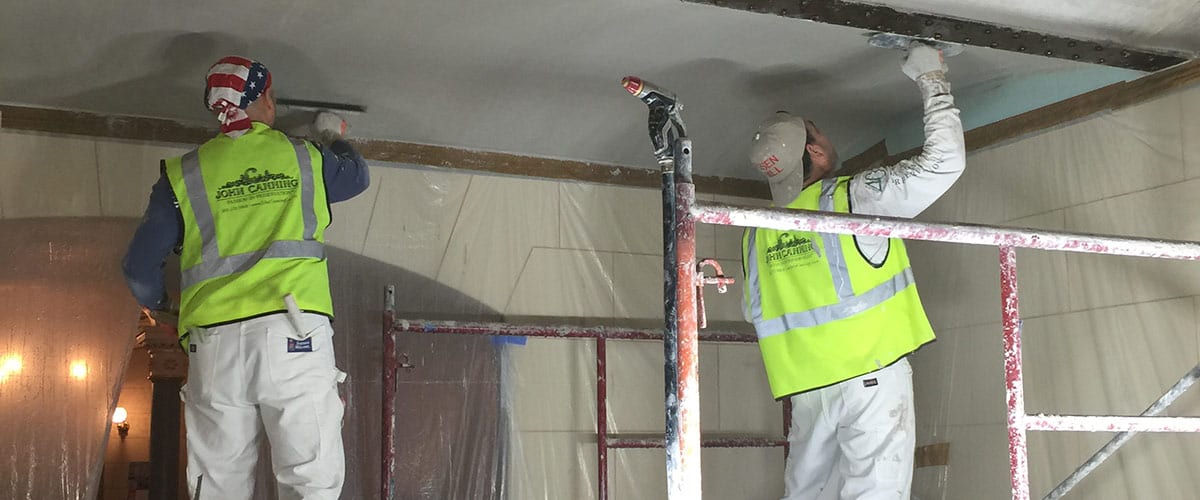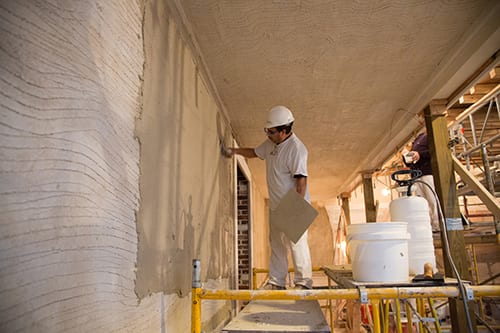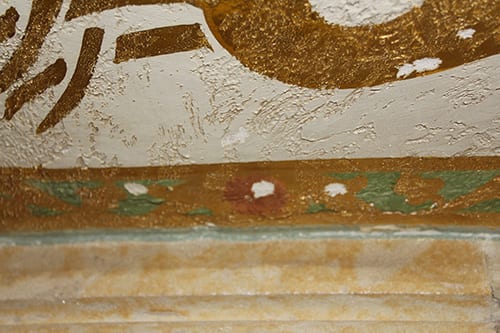Lime Plaster: Historic Use and Technique


Lime plaster is the original type of plaster used in historic buildings. A simple mixture of quicklime, water, horsehair, and sand it creates a durable and workable plaster that can stand the test of centuries. When compared to gypsum based plasters, lime plaster requires a thinner base coats and subsequent coats, while possessing much of the same attributes of traditional three-layer plaster applications.
Making quicklime is a simple and ancient tradition. Lime (either from ground limestone, or pulverized oyster shells) is ‘burnt’ in a Lime kiln to produce quicklime. This process produces high Calcium Oxide Quicklime. Mixing water and Quicklime hydrates the powder and this process is said to “slake” the mixture. Once the lime and water has cooled, it is mixed with sand, long animal hair, and additional water until it reaches an appropriate consistency. From there, it can be troweled on to the substrate which is commonly wood or metal lath, brick or stone. The scratch layer for lime plaster is considerably thinner than that of gypsum; about 1/8” for lime and 3/8” thick for gypsum. The brown and white layers also differ from other plaster types.

Plaster Scratch Brown Layer
Lime plaster often used two coarse coats, which together are referred to as “coarse stuff”. The final layer is called the “setting stuff”. The top layer is made of extra lime, less water, less sand, and no animal hair. This mixture will result in a soft, brilliantly white surface than can be easily manipulated to add in designs. While malleable prior to setting, once the plaster has set and the surface is dry, the result is a durable final layer that will stand up to both time and daily use.
Much of the artistry of lime plaster is exhibited in the “setting stuff”. Skilled plasterers can create unique designs in the surface and alter the way light plays off the surface by using different mineral compounds. Designs popular in many early American colonial homes included swirls made by moving a trowel, or brush, in a circular motion. Similarly, a brush could be used to create a striping pattern. Given its easy application process and thin layers, lime plaster could be used on curves, and frequently progressed from the base of the wall and carried onto the ceiling. Any pattern could be easily carried throughout a space and often, at a time when interior decoration was expensive and hard to come by, plaster art served as ornamentation.
Other common modifications to the “setting stuff” in historic lime plaster included modifying the composition of the top layer to include pulverized marble, glass, or other unique elements. Many of these variations carried light into otherwise dark spaces, will simultaneously providing decorative interest to the finished surface. Add-ons to the plaster mix typically slowed the drying process, so to combat this plaster of Paris was added to expedite drying—this is called “gauging”.


Textured Plaster
Though it produced a beautiful and distinctive final product, the popularity of lime plaster declined in the early 1900s. Both the mixing and application of lime plaster takes professional knowledge. However, in recent times Lime plaster is having a renaissance as it is more environmentally friendly than modern Gypsum plaster and because of the process it uses to “set” is a net carbon retainer. Therefore being useful in the fight against climate change.
Lime plaster is a great period characteristic worth repairing and restoring back to its original grandeur. Unique to each historic building, shimmering marble dust and had applied patterns helps create character that endures. If lime plaster needs repairing or restoring it is best to have a professional who is experienced in historic plaster repairs and restoration.
